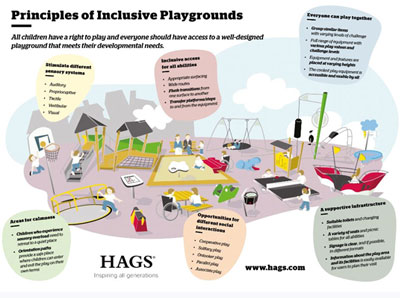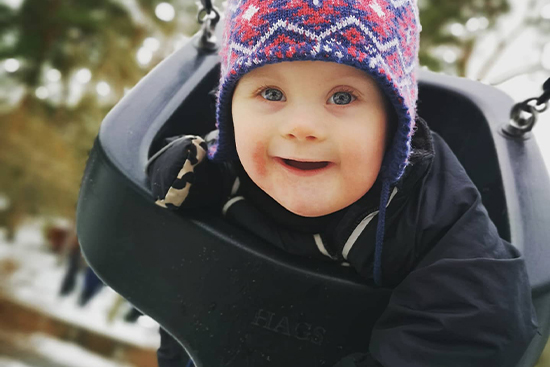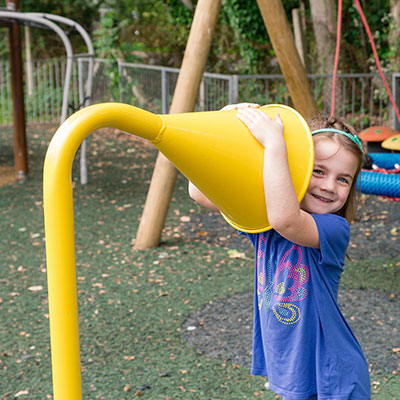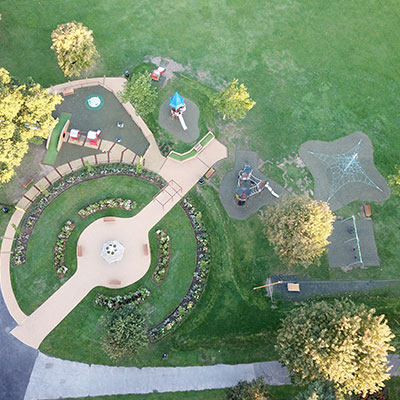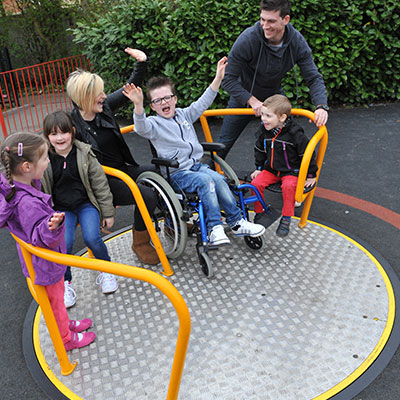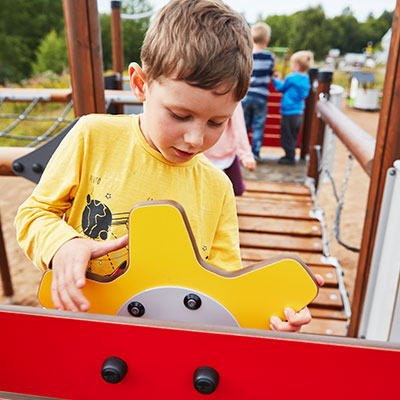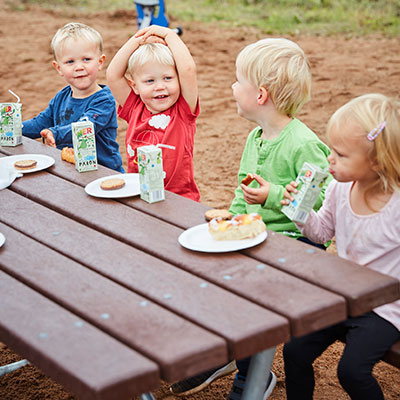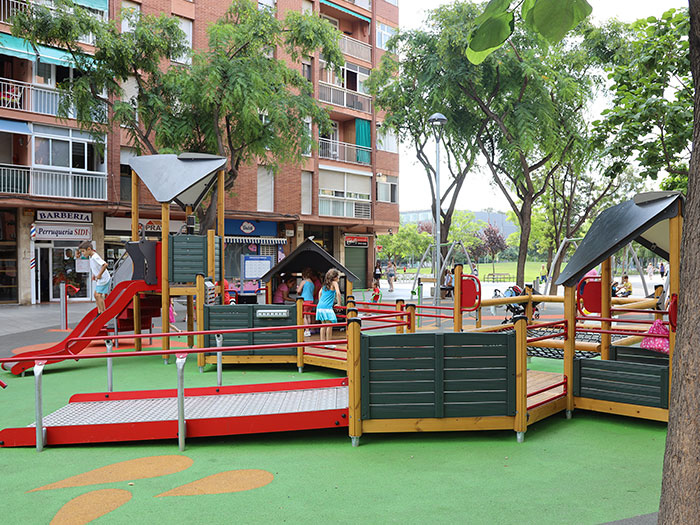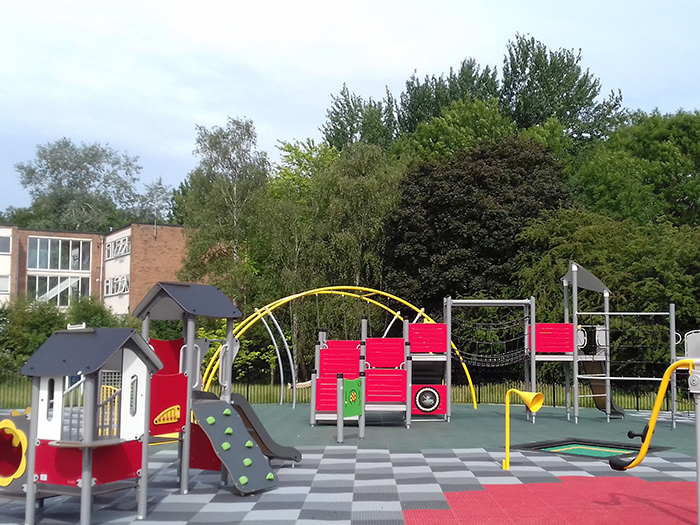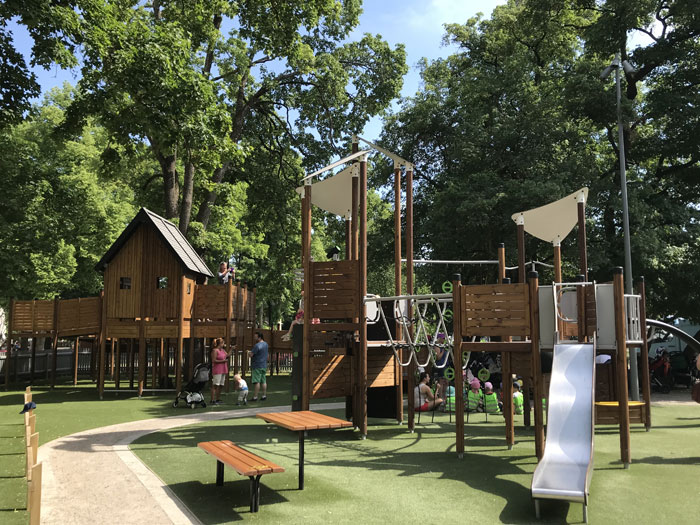Fill your basket with products by clicking "Add to my collection" from any product page. This can be found either within the product options panel or below the product image. Collections can be saved, and stored, within your HAGS Connect account or create and print your own custom brochure, download the files you need in one go, or to request a quote.
Guide to designing inclusive playgrounds
This inclusive play design guide has been created in collaboration with playground and child development experts as a resource to help create great outdoor play environments for children of all ages and abilities.
What is an inclusive playground?
We have also created a helpful downloadable guide where you can learn more about what makes a playground inclusive and how to get started with useful information, worksheets and diagrams.
Get your packA creative designer, passionate about inclusive playgrounds, shares her top tips for creating meeting places that can be used by everyone. We also hear about Milgott and his playground favourites!
New - Play For AllInspiring all to play together
Inspiring all to play together is at the heart of what we do, and inclusive play spaces should provide opportunities for everyone to play together. Inclusive playgrounds should be accessible, engage children of all ages and abilities and encourage them to interact with each other.
Playing is one of the most important ways that children stay active, learn, make friends and socialise. It is also fundamental to children's development and wellbeing.
We believe that more inclusive play spaces allow children to connect with others in a positive way, relieve feelings of stress, stimulate creative thinking and exploration, boost confidence and enable children to enjoy the pleasure and benefits of play.
The Five Principles for Designing an Inclusive Playground
All children have a right to play. Everyone should have access to a well-designed playground that meets their developmental needs.
At HAGS we believe there are five fundamental features present in a playground for all:
1. Multi-sensory elements
Include at least one piece of equipment that stimulates the following sensory systems:
- Auditory - Auditory processing relies on how the brain interprets, recognizes and differentiates sound stimuli. Related equipment includes our musical instruments and talking tubes.
- Proprioceptive - The proprioceptive system consists of sensory information caused by contraction and stretching of muscles and by bending, straightening, pulling and compression of the joints between the bones. Examples of equipment include climbing products, climbing walls, nets & ladders on our UniMini and UniPlay and jumping devices.
- Tactile - Touch is a perception resulting from activation of neural receptors, generally in the skin, including hair follicles. Related equipment includes our climbing rocks due to their texture, sand play and a variety of play panels.
- Vestibular - The vestibular system explains the perception of our body in relation to gravity, movement and balance. Examples of our products include spinners, swings and balancing activities.
- Visual - Visual perception is how the brain processes what the eyes see – recognizing, differentiating and interpreting visual stimuli through comparison with experiences made earlier in life. Related equipment includes brightly coloured play panels, contrasting colours and telescopes which are installed in various UniMinis and UniPlays.

2. Accessibility
An inclusive playground needs to be accessible. Accessibility is about travel, movement and approach.
- Choose appropriate surfacing materials that meets the EN 1176 and EN 1177 standards. Playground surfaces are designed with various purposes in mind, including play value, to reduce severity of injury from falls, access and aesthetics.
- Have routes that are wide enough to allow wheelchair users, parents with strollers, and children who do not like to be touched to pass each other.
- Ensure flush transition from one surfacing to another, this is to allow people using mobility aids to move freely between different areas of the play space and surrounding areas.

3. Play for all
- Similar items with varying levels of challenge, such as spinning equipment, can be grouped together. This allows children of different abilities to take part in the same type of activity next to each other.
- Playgrounds should engage children of all ages and abilities by providing a full range of equipment with various play values and different levels of challenge. Not every child is going to choose to play on every piece of equipment or have the ability to do so. But, it is imperative that every child has a real choice of what to play on.

4. Opportunity for calm
- Secluded areas in the playground, which are still within the sightline, are great for when children experience sensory overload and need to retreat to a quiet place to recalibrate. Examples include areas under a multi-play structure, playhouses and other equipment where the child feels they are enclosed but the parent/carer can still see them.
- Having an orientation path allows children to survey the play experience prior to engaging. These paths become a safe place where there is little activity and enables a child to enter and exit the play on their own terms.

5. Social environments
Playgrounds are wonderful places for children to practice social skills that may be difficult for them. Therefore, it is important to include at least one piece of equipment that encourages cooperative play. Other types of play to think about in a playground for all are:
- Solitary play: A child wants to explore and discover their world and will tend to play alone. Provide play equipment that can be used by one user and do not require anyone else for it to function.
- Onlooker play: A child watches or converses with others at play without joining in. By placing equipment into groups, children can watch how others play and join in when they are ready.
- Parallel play: Children play next to each other in the same area while engaged in their own activities, watching and listening to each other, such as on swings.
- Associate play: Children will play independently while mimicking others, conversing and taking turns, but each child acts alone. This can be seen in sand and water play and around pretend play.

Designing an inclusive playground
Designing for inclusion requires a careful consideration of the overall design and elements within it. It should bring together play values and accessibility in creative ways.
The below sections outline some elements to think about and assess when creating an inclusive play space. This isn’t a rulebook, you or the play space designer may choose to emphasise one aspect over another and create strategies of your own that will best suit the needs of the users.
Involve the community to understand their needs and create a play space that suits them, ensuring you select a site and location that is suitable. Remember to keep stakeholders updated, get them involved in the launch and any events taking place at the play site.
Planning & PreparationImprove accessibility and inclusion through the placement of play equipment and other features on the play space. Consider the purpose of perimeters and boundaries for the specific location before deciding what is required. Think about using plants to soften the look and feel of the play space, help define the zones, create shade and add play value.
LayoutAn inclusive play space is where children of all abilities can play with a rich range of physical, sensory, and social experiences. Include a mixture of the three play value categories to create an exciting and inclusive play space. Each type of play is crucial to a child’s development and enjoyment of the play space.
Play ValueProvide people of all abilities inclusive access and the opportunity to move throughout the play space safely and independently by looking at elements such as surfacing, transfer platforms, width of routes and flush transitions. Surfacing should not only be accessible, it should also be appropriate for the design, location, play equipment and features of the play space.
AccessibilityIt’s essential to plan and discuss the types of equipment and play features to include and where to place them. Similar items should be grouped together so that children of different abilities are participating in the same type of activity next to each other. The playground should feature a full range of challenges to cater for children of different abilities.
Selecting EquipmentProviding supportive infrastructure and amenities is another element that makes your play space inclusive, safe and easy to use by everyone. This includes providing different types of seats for parents, carers and children of all abilities. Allowing children and adults who have a service or assistance animal to use the play space is also important. Think about having appropriate facilities, such as toilets, etc.
Support FeaturesWe have also created a helpful downloadable guide where you can learn more about what makes a playground inclusive and how to get started with useful information, worksheets and diagrams.
Get your guideA creative designer, passionate about inclusive playgrounds, shares her top tips for creating meeting places that can be used by everyone.
Play For All - Tips & InspirationPlay for all at El Prat de Llobregat, Barcelona
HAGS has chosen a selection of inclusive and accessible playground equipment that will cater for a large number of users and for children with different abilities.
Read MoreInclusive Play at River Road Park, Brentwood, UK
This recently completed play area in Brentwood, UK, has been designed with inclusion high on the agenda. The playground has a fully accessible path and includes a broad range of imaginative and inclusive play opportunities for children of all abilities.
Read MoreInclusive Tree House Themed Playground, Sweden
A fantastic inclusive playground in the city of Uppsala, Sweden, featuring a tree house-themed customised UniPlay unit.
Read MoreNature Inspired Inclusive Playground, Australia
The new nature-based playground at the Bundaberg Botanic Gardens in Australia has won the State Award for Best Playscape Award (under $500,000) in the Park and Leisure Australia Awards of Excellence program. This now progresses through the national award finals to be decided in October 2019.
Read More


